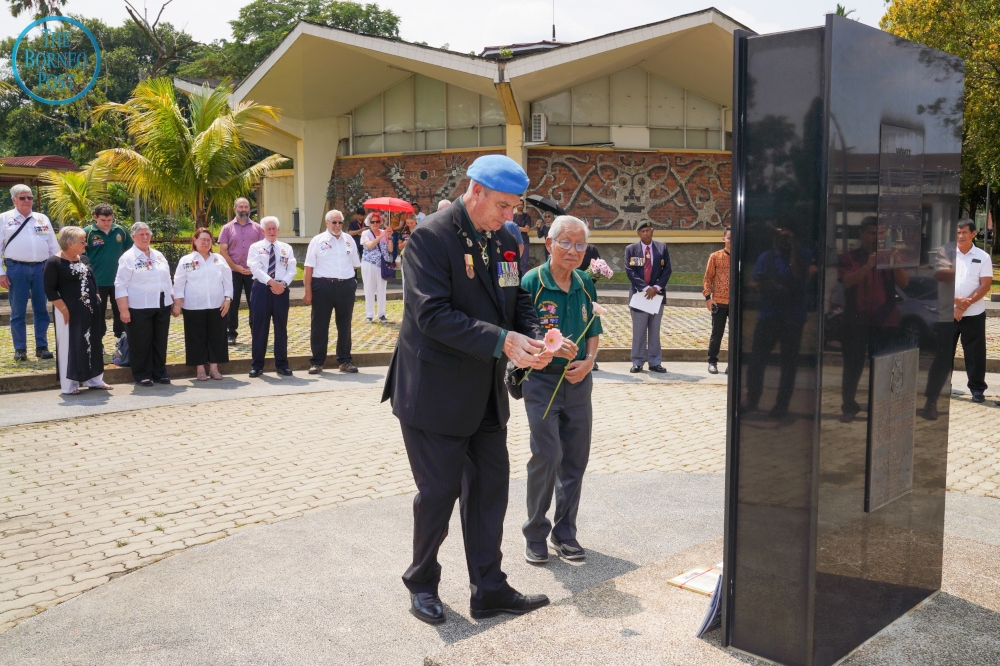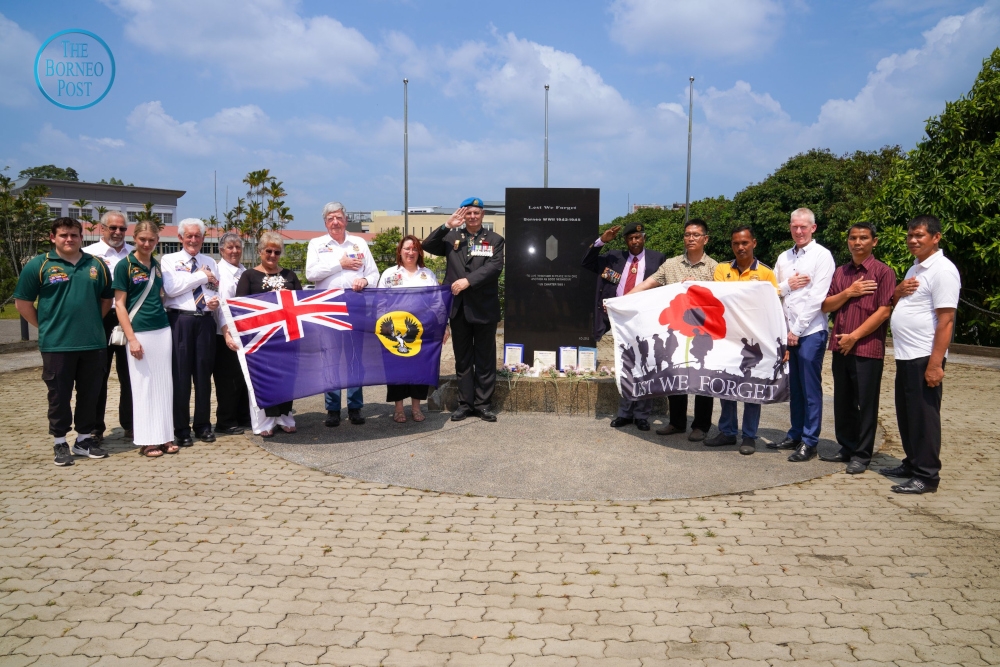KUCHING, Sept 1 — Members of the National Malaya-Borneo Veterans Association of Australia (NMBVAA) held a simple commemoration service at the Batu Lintang Memorial Square here today.
Led by the NMBVAA South Australia and Northern Territory Branch president Major (Rtd) Paul Rosenzweig, the group comprising five war veterans as well as their family members laid flowers at the memorial to honour those who lost their lives during World War II.
“During that time, eight Australians died here in Sarawak while another three succumbed to their injuries. A total of 11 Australians have lost their lives while trying to defend Sarawak,” Rosenzweig told reporters after the ceremony.
“We also honour all the Commonwealth forces and the local forces such as the border scouts, the local Iban trackers, and all the locals in Sarawak, who were involved in the campaign.”
He said the service was also to observe the anniversary of the liberation of the Batu Lintang barracks on September 11, 1945, and to honour Kuching Force commander Brigadier Tom Eastick, who accepted the surrender of the Japanese forces from Major-General Hiyoe Yamamura on board his battleship.
The barracks, on the grounds of what is today the Teacher Education Institute Batu Lintang Campus, was turned into a Japanese internment camp to house allied prisoners of war and civilian internees.
“The size of the camp population was not constant, it fluctuated due to movement of prisoners between different camps and particularly as a result of death,” Rosenzweig said.

Based on records, it is believed that the camp had a maximum population of 3,000 prisoners comprising of British and Indian officers and soldiers, 178 Australian officers and men, Dutch officers and men, Indonesian soldiers, Roman Catholic priests, and various religions men.
“Following the unconditional surrender of Japan on August 15, 1945, the camp was liberated on September 11 by the Australian 9th Division led by Brigadier Tom Eastick.
“The prisoners and internees gathered at 5pm at the main square of the camp to witness Brigadier Tom Eastick accept the sword of Lieutenant Colonel Suga (as a sign of surrender),” Rosenzweig said.
At the time of liberation, the camp’s population was 2,024, which comprised of 1,392 prisoners of war, 395 male civilian internees, and 237civilian women and children.
NMBVAA members comprise of those who served in the prescribed areas of Malaya, Singapore, and Borneo during World War II, the Malayan Emergency, and Indonesian Confrontation with Malaysia.
“We also honour the sacrifice of 45 Australians who died on operational service during the Malaya Emergency and the 26 Australians who died during the Indonesia Confrontation with Malaysia,” Rosenzweig said.
Touching on their visit this year, Paul said NMBVAA is set continue its tradition of holding the commemorative service in Sarawak for future generations.
“Today, we can see the veterans with their families, grandchildren who will be the next generation to come here and keep maintaining the legacy,” he said.
He pointed out most of the veterans in NMBVAA are in their mid-80s and as such are finding it hard to walk and travel.
Rosenzweig also said the association hopes to return next year to unveil a new plaque at the Hero’s Memorial at Taman Budaya.
“We are also hoping to see a bigger group in 2026 to celebrate the 60th anniversary of the end of the confrontation here,” he added.
NMBVAA is currently collecting photographs from the 1960s of Australians who served here in Sarawak, namely at Kampung Gumbang, Kampung Stass, Serikin, and Suba Buan for their collection and also to be placed at the memorial museum in the college.
Also present was Datuk Lim Kian Hock, who is former heritage adviser for the Sarawak Tourism Federation. — Borneo Post





















